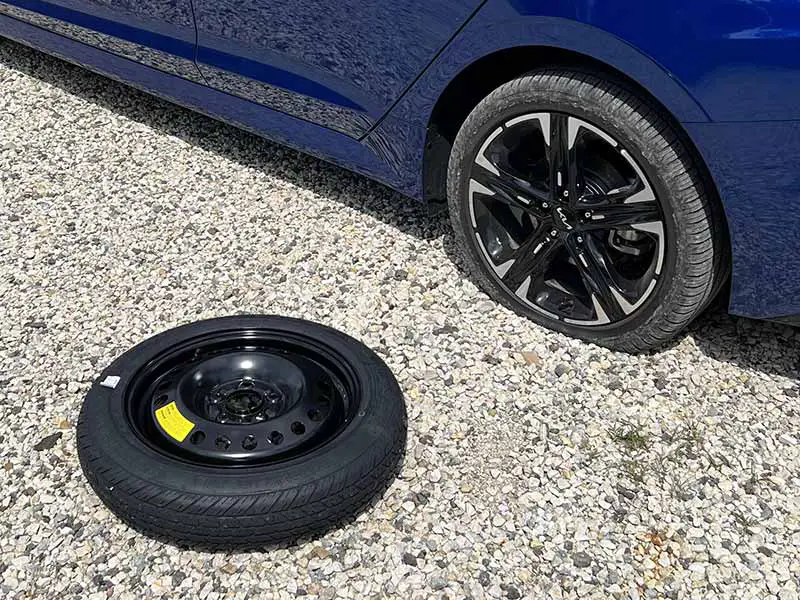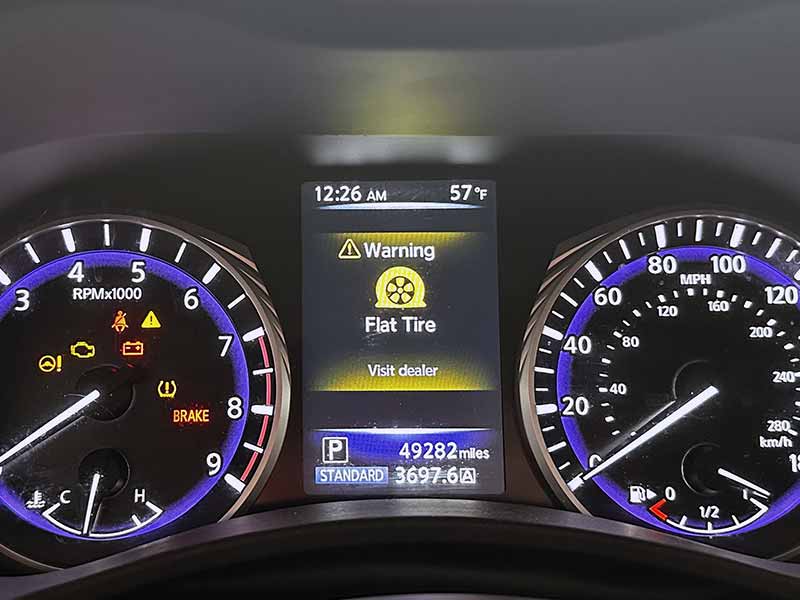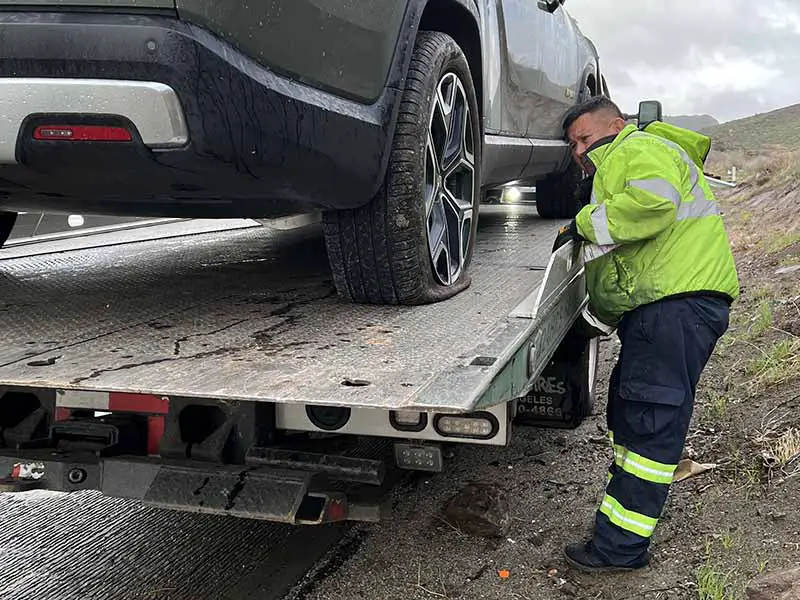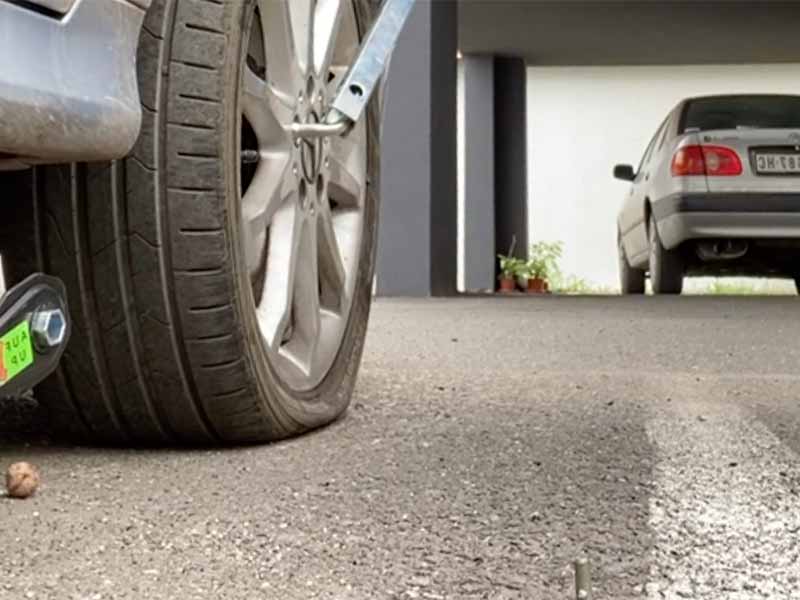Ever been stranded on the side of the road with a flat tire, feeling helpless and frustrated? You’re not alone. Flat tires are a common yet often preventable issue that affects millions of Americans every year. Knowing the facts and being prepared can turn this dreaded experience into a minor inconvenience.
How Many Flat Tires Per Year Occur?
According to AAA Mid-Atlantic, on average, seven tire punctures occur every second in the United States, accounting for 220 million flat tires annually. Flat tires and blowouts are estimated to cause more than 400 deaths and over 78,300 crashes each year.
In this article, we’ll dive deep into the world of flat tires, from revealing eye-opening statistics to exploring why flat tires happen so often. We’ll also guide you through the process of changing a flat tire, discuss the importance of having a spare, and introduce you to modern solutions like run flat tires.
Let’s take a closer look.

The Numbers Game – Flat Tire Statistics
When it comes to flat tires, numbers don’t lie. They give us a clear picture of how often this inconvenience—or in some cases, danger—occurs. Let’s delve into some statistics to understand the scope of the issue.
AAA Flat Tire Statistics
- Frequency: According to AAA, they respond to more than 4 million calls for flat tire assistance each year in the United States alone.
- Seasonal Trends: The summer months tend to see a spike in flat tire incidents, mainly due to higher temperatures affecting tire pressure.
- Location: Urban areas report more flat tire incidents compared to rural areas, likely due to road conditions and debris.
How Often Do People Get Flat Tires?
Understanding the average frequency of flat tires can help you gauge the risk and prepare accordingly.
- Per Driver: On average, a driver will experience up to 5 flat tires in their lifetime.
- Per Year: If we consider the number of registered vehicles and the frequency of flat tires, it’s estimated that one in every 70 cars will have a flat tire each year.
The Role of Tire Pressure
Tire pressure plays a significant role in the likelihood of getting a flat tire.
- Under-inflated Tires: Around 15% of all flat tires are due to under-inflated tires.
- Pressure Monitoring: Cars equipped with tire pressure monitoring systems (TPMS) are less likely to experience a flat due to under-inflation.
Tire-Related Crashes
While flat tires are mostly an inconvenience, they can sometimes lead to more serious incidents.
- Accidents: About 738 fatalities occur each year in the U.S. due to tire-related crashes.
- Prevention: Proper tire maintenance can prevent up to 30% of these incidents.
Key Takeaways
- Flat tires are a common issue, with millions of incidents reported each year.
- Seasonal and geographical factors can influence the frequency of flat tires.
- Proper tire maintenance and monitoring can significantly reduce the risk of a flat tire and related accidents.

Why Do Flat Tires Happen So Often?
Flat tires are a common issue for drivers, but why do they happen so frequently? Understanding the root causes can help you take preventive measures.
Tire Punctures
- Frequency: Punctures account for nearly 70% of all flat tires.
- Causes: These are often caused by sharp objects like nails, glass, or even potholes.
Worn Tires
- Tread Depth: Tires with a tread depth below 1/16th of an inch are more susceptible to flats.
- Signs: Look for uneven wear patterns or exposed threads.
Under-Inflated Tires
- Pressure Loss: Tires naturally lose about 1 psi (pound per square inch) of pressure each month.
- Risks: Under-inflated tires generate more heat, which can lead to a blowout.
Why Some People Get More Flats Than Others
You might wonder why some people seem to get flat tires more often than others. Here are some factors that contribute to this:
- Driving Habits: Aggressive driving can lead to more frequent flats.
- Road Conditions: Poorly maintained roads can increase the risk of punctures.
- Vehicle Type: Trucks and SUVs may experience fewer flats due to more robust tires.
The Role of Seasonal Changes
- Summer: Higher temperatures can affect tire pressure, making flats more likely.
- Winter: Cold weather can cause tires to lose pressure, increasing the risk of a flat.
Preventive Measures
Understanding why flat tires happen so often allows us to take steps to prevent them.
- Regular Checks: Make it a habit to check your tire pressure at least once a month.
- Tire Rotation: Rotating your tires can help ensure even wear, reducing the risk of flats.
- Quality Matters: Investing in high-quality tires can pay off in the long run.

Who Can Change a Flat Tire?
You might be surprised to learn that not everyone is equipped with the know-how to change a flat tire. According to various surveys, less than 60% of Americans feel confident enough to change a flat tire on their own.
Basic Steps to Change a Flat Tire
Changing a flat tire is a skill that every driver should possess. Here’s a simplified guide to help you get back on the road:
Tools You’ll Need
- Lug Wrench: To remove and tighten the lug nuts.
- Jack: To lift the car off the ground.
- Spare Tire: A replacement for the flat tire.
- Tire Iron: Sometimes used in place of a lug wrench.
The Process
- Safety First: Pull over to a safe location and turn on your hazard lights.
- Prepare the Tools: Gather all the necessary tools close to the flat tire.
- Loosen the Lug Nuts: Use the lug wrench or tire iron to slightly loosen the lug nuts.
- Lift the Car: Use the jack to lift the car until the flat tire is about 6 inches off the ground.
- Remove the Flat: Take off the loosened lug nuts and then remove the flat tire.
- Install the Spare: Put the spare tire on and hand-tighten the lug nuts.
- Lower the Car: Use the jack to lower the car back to the ground.
- Tighten the Lug Nuts: Fully tighten the lug nuts using the lug wrench or tire iron.
- Check Tire Pressure: Make sure the spare tire has the correct pressure before driving off.
The Importance of Practice
Knowing how to change a flat tire in theory is different from actually doing it. Practice makes perfect.
- Dry Runs: Consider doing a few practice runs in your driveway.
- Time Yourself: The more you practice, the quicker you’ll get.
When to Seek Professional Help
While changing a flat tire is a valuable skill, there are situations where it’s safer to seek professional help.
- Heavy Traffic: If you’re on a busy highway, it might be safer to call for roadside assistance.
- Lack of Tools: If you find that your car isn’t equipped with the necessary tools, professional help is advisable.

The Importance of Spare Tires
A spare tire is like a safety net for drivers. When you get a flat, a spare tire can be the difference between being stranded and getting to your destination safely.
Types of Spare Tires
Not all spare tires are created equal. Knowing the type you have can affect how you deal with a flat tire.
Full-Size Spare
- Advantages: Same size as your regular tires, can be driven at normal speeds.
- Disadvantages: Takes up more space in your trunk.
Compact Spare (Donut)
- Advantages: Takes up less space, lighter weight.
- Disadvantages: Limited to 50 miles and slower speeds, not suitable for long-term use.
Run Flat Tires
- Advantages: Can be driven on for a limited distance after a puncture.
- Disadvantages: More expensive to replace, not all vehicles are equipped for them.
Spare Tire Maintenance
Just having a spare tire isn’t enough; it needs to be in good condition to be effective.
- Check Pressure: Your spare tire’s pressure should be checked regularly, just like your regular tires.
- Inspect for Damage: Look for any signs of wear, cracks, or other damage.
- Know Its Age: Tires have a shelf life; even unused spares should be replaced after 6-10 years.
How to Use a Spare Tire Safely
Using a spare tire involves more than just installing it. Here are some safety tips:
- Speed Limit: If you’re using a compact spare, don’t exceed 50 mph.
- Distance: Don’t drive more than 50 miles on a compact spare.
- Replace Promptly: After using a spare, replace it with a new tire as soon as possible.
When You Don’t Have a Spare
In some cases, your vehicle might not come with a spare tire. Here’s what you can do:
- Tire Repair Kits: Some cars come with a tire repair kit that can temporarily seal small punctures.
- Roadside Assistance: When in doubt, it’s always safe to call for professional help.
Run Flat Tires – A Modern Solution
Run flat tires are a modern innovation designed to keep you moving even after a puncture. Unlike traditional tires, they allow you to drive for a limited distance at a reduced speed after suffering a flat.
How Do Run Flat Tires Work?
Understanding the mechanics of run flat tires can help you make an informed decision about using them.
- Reinforced Sidewalls: These tires have stronger sidewalls that can support the weight of the vehicle even when the tire is deflated.
- Self-Supporting: The design allows the tire to maintain its shape, enabling you to continue driving.
Advantages of Run Flat Tires
Run flat tires offer several benefits that can make them an attractive option.
- Safety: You can avoid the risk of changing a tire on a busy road.
- Convenience: No need to carry a spare tire, freeing up trunk space.
- Control: Better handling and stability after a puncture compared to a regular flat tire.
Disadvantages of Run Flat Tires
While they offer several advantages, run flat tires also come with some drawbacks.
- Cost: They are generally more expensive than standard tires.
- Limited Range: You can only drive a limited distance (usually 50-100 miles) at a reduced speed after a puncture.
- Replacement: Most run flat tires can’t be repaired and must be replaced.
Compatibility and Installation
Before you decide to switch to run flat tires, consider the following:
- Vehicle Compatibility: Not all vehicles are equipped to handle run flat tires.
- Professional Installation: It’s advisable to have run flat tires installed by professionals to ensure they are fitted correctly.
When to Use Run Flat Tires
Run flat tires are not for everyone or every situation. Here are some scenarios where they make sense:
- Urban Driving: Useful in city conditions where help is readily available.
- Short Commutes: Ideal for those who drive short distances and can quickly reach a service station.

Roadside Assistance and Other Safety Measures
Roadside assistance can be a lifesaver when you’re dealing with a flat tire, especially if you’re not equipped to handle it yourself.
- Quick Help: Most services promise to reach you within an hour.
- Professional Service: You get expert help in fixing your flat tire, ensuring it’s done safely and correctly.
Benefits of Roadside Assistance Plans
Having a roadside assistance plan can offer you peace of mind on the road.
- 24/7 Availability: Help is available around the clock.
- Multiple Services: Besides flat tires, they can assist with other issues like battery jumps and fuel delivery.
Tire Pressure Monitoring Systems (TPMS)
A Tire Pressure Monitoring System is an automated system that monitors the air pressure inside the tires.
- Early Warning: TPMS will alert you if your tire pressure is too low, helping you avoid a flat.
- Increased Safety: Proper tire pressure contributes to better vehicle handling.
Tire Repair Kits and Pressure Gauges
If you prefer a DIY approach, having a tire repair kit and a pressure gauge can be invaluable.
Tire Repair Kits
- Temporary Fix: These kits can seal small punctures, allowing you to reach a service station.
- Components: Usually includes a sealant and a compressor to inflate the tire.
Pressure Gauges
- Manual Gauges: Simple devices that you attach to the tire valve to read the pressure.
- Digital Gauges: Offer more accurate readings and are easier to use.
Additional Safety Measures
- Gloves and Flashlights: Always good to have in your car for any emergency.
- Reflective Triangles: To alert other drivers when you’re pulled over.
Resources
Below are some links you may find helpful when learning about tires
- Tire blowout season is upon us, as 40 million Americans hit the road for the fourth of July holiday travel period – AAA Mid-Atlantic
- How to prevent flat tires – Progressive Insurance
Final Thoughts
The key takeaways from this comprehensive guide are the importance of understanding flat tire statistics, knowing how to change a flat tire, and the value of preventive measures like regular tire rotation and pressure checks.
By arming yourself with this knowledge and taking proactive steps, you can significantly reduce your risk of experiencing a flat tire and handle it efficiently if it does happen.
Good luck and happy motoring.




